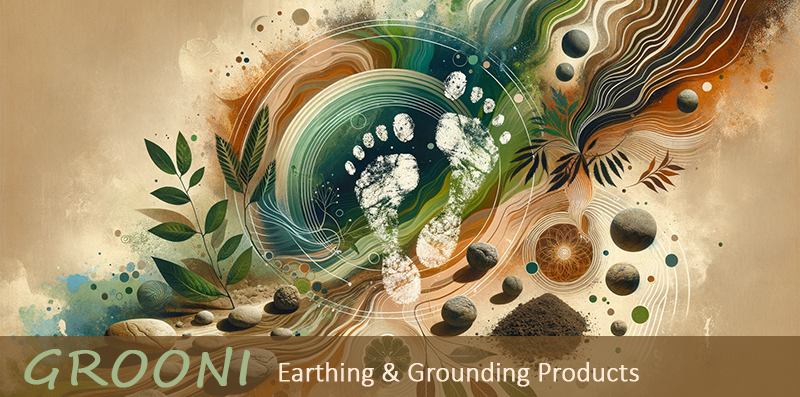
Sometimes, all we need to feel calm and centered is a little time in nature. Grounding, or earthing, is a practice of connecting physically with the Earth’s surface to promote balance, reduce stress, and support mental and physical wellness. By recharging ourselves with the Earth’s natural energy, grounding can help reduce inflammation, improve mood, and support restful sleep. Best of all, grounding doesn’t require any fancy equipment—just a patch of grass, soil, or sand and a few simple techniques to get started.
Contents
What Is Grounding and Why Does It Matter?
Grounding, also known as earthing, involves connecting directly with the Earth’s natural electric charge. We humans are electrical beings, and throughout history, we’ve naturally “grounded” ourselves by spending time barefoot or working with our hands in the soil. Today, our shoes, concrete floors, and busy lives often keep us isolated from this natural connection, which some researchers believe can lead to imbalances in our body’s electrical state.
How Grounding Works
The Earth’s surface has a mild negative charge, and when we make direct contact with it, electrons from the Earth flow into our bodies, helping to balance our own electrical charge. This flow of electrons may help neutralize free radicals in the body, reducing inflammation, stress, and even physical pain. People who practice grounding often report feeling more centered, less anxious, and physically healthier.
Simple Ways to Ground Yourself Naturally
You don’t have to travel far to start grounding. Whether you’re in a city, suburb, or rural area, there are easy ways to connect with the Earth every day. Here are some natural grounding techniques to try, no matter where you are.
Walking Barefoot on Natural Surfaces
The simplest and most classic form of grounding is to take off your shoes and walk barefoot on natural surfaces like grass, soil, or sand. This direct contact with the Earth’s surface allows electrons to flow into your body, helping to balance your electrical charge. Plus, the sensation of bare feet on the ground can be soothing, providing a sensory break from our usual routines.
To get the most out of barefoot grounding, aim to spend at least 15-20 minutes each day with your feet on the ground. It may sound small, but those few minutes can have a big impact on your mood, energy, and overall sense of well-being.
Sitting or Lying on the Ground
If walking barefoot isn’t possible, sitting or lying down on the ground can provide the same grounding benefits. Bring a blanket or towel if you prefer, but allow your hands or feet to touch the Earth directly. Whether you’re in a park, backyard, or on a sandy beach, spending time seated or reclined on the ground allows you to connect naturally with the Earth’s energy.
Gardening with Bare Hands
For those who love to garden, working with your hands in the soil is a natural form of grounding. As you plant, weed, or dig in the soil, your bare hands come into direct contact with the Earth, providing an instant grounding effect. Gardening also provides additional mental health benefits, such as reducing stress, improving focus, and lifting your mood. You can even think of it as “hands-on” grounding therapy!
Grounding Techniques for Indoors
Grounding doesn’t have to stop when you’re indoors. If you live in a city or spend a lot of time inside, there are still ways to ground yourself. Here are a few indoor grounding techniques to bring the Earth’s energy into your home.
Using Grounding Mats and Sheets
Grounding mats and sheets are specially designed products made from conductive materials that connect to an electrical outlet’s grounding port. These mats allow you to ground yourself indoors by mimicking the effect of direct contact with the Earth. Simply place a grounding mat under your feet while you work or use a grounding sheet on your bed while you sleep to stay grounded even when indoors.
Touching Metal Objects Connected to the Earth
Metal conducts electricity, so touching a metal object connected to the Earth can create a grounding effect. For example, touching a grounded metal pipe or metal faucet (especially if the water runs underground) can provide temporary grounding indoors. While this isn’t a substitute for direct contact with the Earth, it can provide a small grounding benefit, especially if you’re unable to go outside.
Natural Water-Based Grounding Techniques
Water is a powerful conductor of the Earth’s energy, which makes it another effective way to practice grounding. Whether it’s in a lake, river, or even your shower, connecting with water can offer a grounding experience that’s simple and accessible.
Swimming in Natural Bodies of Water
Swimming in natural water, like a lake, river, or ocean, is one of the most refreshing ways to ground. Water amplifies the grounding effect, making swimming an ideal option, especially during warm weather. If you don’t live near natural water, consider taking advantage of any nearby parks, beaches, or even community lakes when you’re able to. The effects are worth the trip.
Taking a Cold Shower
If you’re stuck indoors, even a cold shower can have grounding benefits. Cold water in particular has been linked to increased alertness, reduced inflammation, and improved circulation. While a shower doesn’t provide the same direct connection as natural water, many people find that it helps them feel more present, refreshed, and grounded.
How to Make Grounding Part of Your Routine
Grounding is most effective when it becomes a regular part of your life. Here are some tips to help you make grounding a consistent habit that’s easy to stick with.
Combine Grounding with Existing Routines
Look for ways to combine grounding with activities you’re already doing. For example, if you enjoy your morning coffee outside, kick off your shoes and let your feet touch the ground while you sip. If you’re out with a pet, try grounding yourself by standing barefoot for a few moments while they play. This way, grounding becomes a natural extension of your day rather than a separate task.
Set a Regular Time for Grounding
Try setting a specific time each day for grounding, even if it’s just for five minutes. Morning and evening tend to work well, as grounding can bring calm and focus to start the day or help unwind at the end of it. Pick a time that works for you, and think of it as “me time”—a moment to recharge and reconnect.
Listen to Music, Meditate, or Practice Mindfulness While Grounding
Grounding pairs well with other relaxation techniques like mindfulness and meditation. Use your grounding time to listen to calming music, practice deep breathing, or simply take in the sounds around you. Grounding becomes a more fulfilling experience when you engage your senses, helping you feel even more connected to yourself and your environment.
Common Questions About Grounding
Grounding is simple, but it can raise questions for those who are new to the practice. Here are answers to some frequently asked questions about grounding.
How Long Do I Need to Ground Each Day?
Even a few minutes a day can make a difference. Many people find that 15-20 minutes daily is enough to feel the effects, but there’s no harm in doing more. The more consistent you are, the better your body can maintain its natural balance.
Is Grounding Safe for Everyone?
Grounding is generally safe for most people. However, if you have certain medical devices, like a pacemaker, talk with your doctor before using grounding products. For most people, the benefits of grounding are safe and accessible, whether you’re outdoors or using indoor grounding techniques.
What Are the Signs that Grounding Is Working?
People who practice grounding often report feeling calmer, more centered, and less stressed. Improved sleep, less muscle tension, and a lifted mood are also common. It may feel subtle at first, but over time, grounding can bring a noticeable difference in both mental and physical health.

